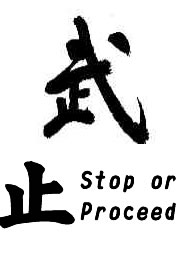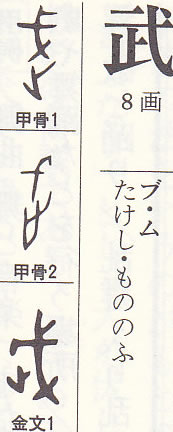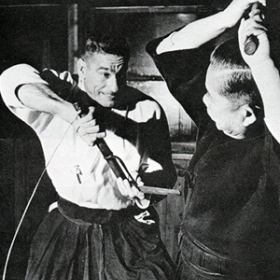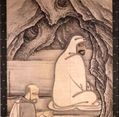The weight of kanji tend to have us think of something ancient which they are. We conjure up visions of ancient geomancers studying the cracked tortoise shells in the fire from which some of these symbols emerged. Obstructed by the haze is a quasi-mythical quasi-religious experience. Sorry, the theory that kanji evolved from a drunk chicken that ran through an ink well has been debunked and the culprit caught – it was me! There have always been efforts to explain how kanji came to depict certain things. It is easy for example to picture “Tsuki” or Moon. 『月』つき MOON4画〔〕4画(ゲツ・ガツ・つき)小学1年 甲骨文字 金文 篆文 (象形)三日月の形。Shape of Crescent moon That’s what the picture kinda looks like. It isn’t always this easy. It isn’t easy to buck the conventional wisdom of the most credible dictionaries and experts when you have a contrary interpretation. Armed with centuries of tradition promoting incorrect exactitude s can obviously trigger some resistance. Within the Japanese language a battleground has been set and the outcome is far from certain as firmly entrenched truths are now being challenged through new scholarship and yes the changes are both combative and painful. Enter the fray of one Dr. Shirakawa. In fact this article is in part small homage to his work and for his unwavering desire to take up the battle and demystify some of the currently held sacrosanct beliefs about the meaning of kanji. Dr. Shirakawa stumbled upon the good fortune of a Westerner’s rummaging through an antique store where a vessel containing a “dragon’s bone” was found. Yup, well it was actually a tortoise shell that had been been placed in fire many millennia ago. This shell was the remnant of the birth of kanji as a written language. (Koukotsu Moji) It was also a catalyst for Dr. Shirakawa to dedicate his life’s study to the Yin dynasty of 3000 years ago. Perhaps tedious to us, he went about the task of challenging comfortably held tenets of what generations of Japanese had been taught about their language. Sometimes the differences are startling and sometimes nuanced and hardly worth debating outside of academic circles.
0 Comments
Leave a Reply. |
AuthorRick Categories
All
Archives
January 2017
|
|
Po Box 232 Severna Park, MD. 21146
|
Copyright © 1996 - 2023



 RSS Feed
RSS Feed






